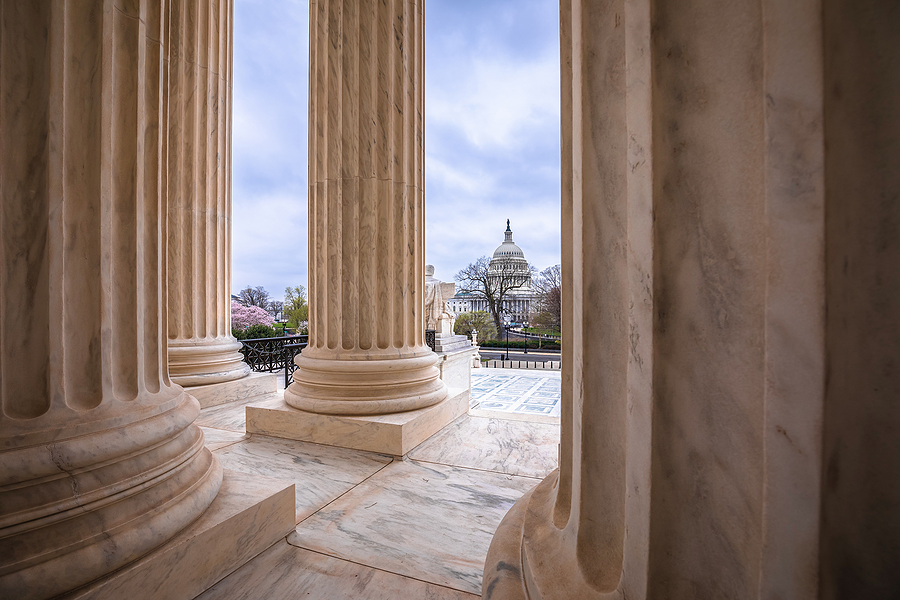
June 07, 2023

Source: Bigstock
The Supreme Court will soon rule on college admissions affirmative action. (Heck, they might have already announced their decision by the time you read this.)
What should the Supreme Court do next?
Here are some key points the Court should make in upcoming years to counter the growing antiwhite hate and discrimination of our era.
In an increasingly childish age in which the dominant worldview tends to be similar to those of Marvel movies in which there are Good Guys who clearly deserve to beat up the Bad Guys, the Court can speak out for the grown-up idea that in American law no race is born good or bad.
(1) The key is not to try to abolish civil rights laws, which would be impossible in the current climate, but to articulate that civil rights are inclusive. No race is excluded. Everybody possesses equal civil rights. Same as everybody else, whites and men are protected classes.
(2) For instance, one crucial step is to declare in clear, ringing language that the 14th Amendment’s famous Equal Protection Clause applies not just to the currently more favored races but also to whites and Asians.
Bizarrely, the question of whether or not the phrase “equal protection of the laws” protects whites as well as blacks simply doesn’t come up much these days. I searched in Google, Bing, and DuckDuckGo for the text strings:
“Does the 14th Amendment [equal protection clause] apply to whites [white people]?”
…and found absolutely nothing on the entire internet.
My impression is that conservatives assume that of course the 14th Amendment pertains to whites as well as nonwhites: Just read it. On the other hand, liberals assume that of course the Equal Protection Clause does not apply to whites: That would be racist (which in practice they define as the law treating people equally).
The Supreme Court should clear up this muddle definitively.
(3) Similarly, the Court should announce that hostile environment law very much protects whites and men as well as its traditional beneficiaries. Therefore, mandatory training classes preaching the antiwhite doctrines of Diversity, Inclusion, and Equity and/or Critical Race Theory represent prima facie evidence of a hostile work environment for white employees. Nobody would doubt this if the races were reversed and blacks were forced to endure organized harassment by professional white bigots, so why should it be legal for employers and schools to impose a hostile environment upon whites?
(4) Statements of support for DIE/CRT by holders of powerful positions in institutions are to be taken as prima facie evidence of intention to discriminate illegally against whites and/or Asians.
(5) In law, the word “equity” does not mean equality of outcome. “Equity” as recently redefined is no part of the Constitution.
(6) Affirmative action discrimination against whites and Asians cannot be justified on the grounds that they are the “majority.” Whites are already a minority in the two biggest states and headed for minority status in most places. Asians, of course, currently are a minority. Instead, racial quotas are racial discrimination.
(7) The courts cannot be in the business of readjudicating all the countless eminent domain decisions from the distant past when everybody with firsthand knowledge of what actually happened is dead in the hope of awarding random blacks a huge payout based on family lore, such as the recent $20 million giveaway in the Manhattan Beach case.
(8) The legal system is forward-looking. It should be focused on preventing injustices in the future rather than remedying those in the increasingly distant past.
(9) The United States legal system is not in the business of enforcing a “racial reckoning.” We treat individuals as individuals.
(10) Justice Lewis Powell’s decision in the 1978 Bakke case in which he asserted that affirmative action in college admissions is needed to promote diversity of opinion and expression on campus seemed reasonable at the time, but it has since obviously proved to be completely wrong empirically. Instead, quotas lead to students with chips on their shoulder about their intellectual deficiencies boosting cancel culture on campus to assuage their self-esteem.
(11) Also, contrary to the Bakke decision, there’s no honest real-world distinction between “quotas” (which Bakke outlawed) and “goals” (which Bakke legalized). It pains us to say this, but Justice Powell was naive.
(12) Reaffirm that the 2003 Grutter decision’s 25-year limit on racial preferences is mandatory. Quotas must be phased out steadily between now and their 60th year in 2028. Three score is enough.
(13) Allow race quotas to continue to be used for police departments, due to their extremely political nature, but not for fire departments, which must deal primarily with nonpolitical reality. Instruct lower courts to take guidance from this distinction.
(14) Disparate impact theory must be brought into accord with the findings of social science over the past half century. Racial differences in key traits such as intelligence and crime are statistically pervasive. Rather than make equality of outcome the default assumption with the burden of proof on those trying to explain why it wasn’t achieved, the burden of proof should rest on those insisting that this particular instance would have been the rarity in which equality would exist without discriminatory behavior on the part of the deep-pocketed.
(15) What social science hasn’t determined is whose fault are these racial gaps. Assuming that the cause must be due to the culpability of another race, who thus must pay, is evidence of discriminatory intent. And greed.
(16) A final principle that needs enunciation: You can’t discriminate in favor of one race without discriminating against at least one other race. That’s just the way math works.